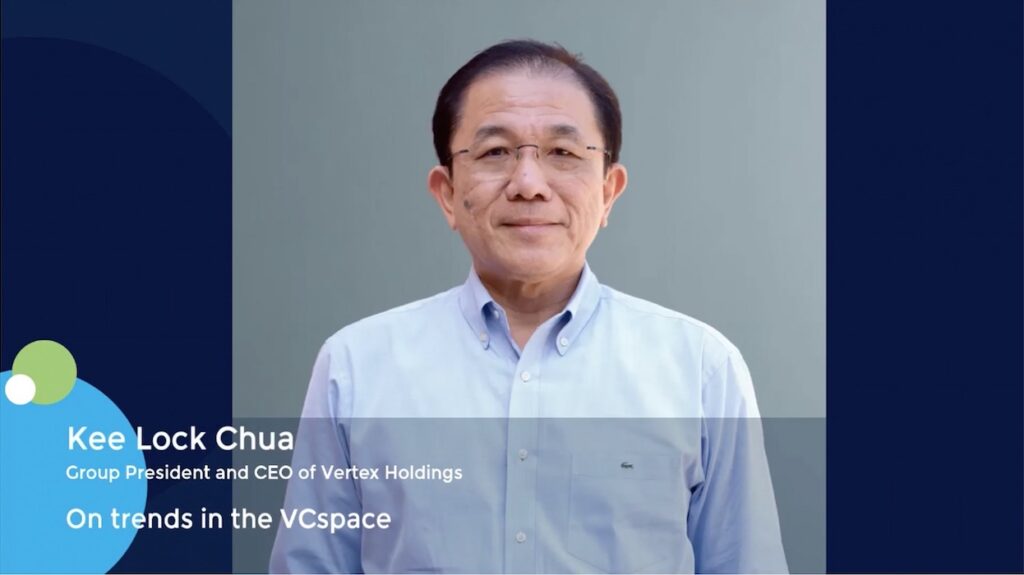Impact investing in Asia: The painful courtship of commercial capital
- Many mainstream LPs lack the conviction to back unproven Asian impact strategies
- Standardisation of measurement and reporting helps assuage greenwashing fears
- Climate aside, most LPs cannot articulate what they want from the impact space
Clime Capital and the New Global South Initiative exist at opposite ends of the investment spectrum: the early-stage clean energy investor seeking USD 135m for its second Southeast Asia-focused fund versus the USD 2.5bn TPG and Middle East-backed behemoth that targets growth-stage climate deals across emerging markets. But both are working to catalyse wider LP participation in the impact space.
For Clime, it is essential to upscaling for Fund II. Founded in 2019, the manager raised USD 22m in its first vintage, drawing on philanthropic sources of capital such as Microsoft’s Climate Innovation Fund. Those LPs were happy to re-up, but they wanted a larger corpus capable of delivering greater impact.
The solution is a blended structure whereby philanthropic investors have committed USD 47m to a first close on the understanding that they will be first money in, last money out. This means commercial investors following them in – development finance institutions (DFIs) like the International Finance Corporartion (IFC) and corporates like clothing brand REI – receive preferred equity to minimise risk.
“This is the only early-stage equity fund of its kind that blends philanthropic, private sector, and public sector capital,” said Mason Wallick, CEO of Clime. “It’s like mixing vinegar and oil and making a salad dressing that tastes good to everyone. It took a long time to crack it.”
The New Global South Initiative will receive USD 500m from Alterra, a climate-focused offshoot of Abu Dhabi-based investment manager Lunate, which is intended to facilitate further fundraising by TPG. Alterra is also putting USD 1bn into the second iteration of TPG’s Rise Climate series and that fund will channel the same amount into co-investments alongside the New Global South Initiative.
Maya Chorengel, co-managing partner of The Rise Fund, the impact strategy of which Rise Climate is part, described the initiative as a replacement for the government incentives that make climate investments more viable in North America and Europe but are lacking in Asia. Ultimately, though, it is still a means of attracting investors that might otherwise be reluctant to participate.
“Alterra is capping its return and providing other features to draw in additional investors,” said Chorengel. “Sometimes it’s necessary to create mechanisms to crowd capital in because government don’t have the ability to incentivize investors to participate through tax incentives and subsidies. You can create catalytic capital to mirror what legislation is doing in places like the US and Europe.”
It is seven years since dedicated impact investment strategies went mainstream, a development punctuated by the TPG debut Rise Fund offering – at USD 2bn, the first institutionally focused impact vehicle with a global mandate – and a scale up in fund size for incumbents like LeapFrog Investments.
Since then, in an Asia context, there has been increased LP demand for the growing number of impact products launched by established managers globally. Meanwhile, investment opportunities have proliferated, spreading from venture to growth and from broad developmental impact captured by financial technology, education, and healthcare to niche and not-so-niche areas like gender and climate.
Yet the impact manager ecosystem seems incomplete. The likes of TPG, KKR, Temasek Holdings-backed ABC Impact, and LeapFrog occupy the growth space, but smaller GPs haven’t stepped up, partly because commercial capital is unconvinced. Concerns remain as to what constitutes impact, how it can be codified and tracked, and whether these GPs can deliver impact and financial returns at scale.
“There is a growing ecosystem of impact managers in Asia – some with more serious impact models than others,” said Doug Coulter, a partner at LGT Capital Partners, a fund-of-funds active in impact.
“In general, we see a lot of interesting emerging managers in Asia that are doing the right thing in terms of impactful investments, but they are relatively early on in terms of their life as a GP. The returns are not proven and that’s what makes it challenging for anyone who wants to come in.”
Selling impact
The notion that impact can be achieved without compromising financial returns is central to the expansion in global impact assets under management (AUM) from USD 94.9bn in 2017 to USD 212.6bn in 2022. As for capital sources, 20% of AUM seeking market-based returns came from pension funds, according to Global Impact Investing Network (GIIN). Family offices and DFIs followed on 16% and 14%.
It was also in 2017, at the start of this exponential growth, that Khailee Ng, a managing partner at early-stage investor 500 Global, experienced a eureka moment on a panel at the UN General Assembly. His fellow panellists – mostly global institutions – claimed they couldn’t find businesses that offered impact and scale. Ng realised they were sitting in his Southeast Asia portfolio, just not labelled as impact.
500 Global ended up creating an impact accelerator programme, but the firm doesn’t brand itself as an impact investor, despite considerable overlap with the UN sustainable development goals (SDGs) in areas like financial inclusion. Once source close to the firm described formal impact designation as “politically loaded” and liable to be misunderstood.
Indeed, accounts of mislabelling and misrepresentation, often with a view to accessing wider pools of capital earmarked for impact, are rife. Several industry participants referenced Asia-based VC firms that have raised capital under impact mandates and then segued into traditional consumer internet investments, having failed to find appropriate deals capable of delivering the returns promised to LPs.
At the same time, tougher regulations around climate-related disclosures have led to greenwashing litigation against asset managers, chiefly those operating in public markets. Australia’s securities regulator, for example, has launched three civil penalty cases over misrepresentation of sustainability-related financial products. In March, it prevailed in court against Vanguard Investments.
“For a lot of LPs interested in impact investing, there is a tension to understanding how impact can help and how it needs to be done well. They are mindful and aware of the risk of greenwashing and what that means in terms of how they invest and what they invest in,” said Caitlin Medley, who has previously held responsible investment roles at insurers Prudential in Singapore and QBE in Australia.
This greater awareness of what impact should constitute has emerged in tandem with more meaningful industry standards around best practice. Notably, the Operating Principles for Impact Management (OPIM) launched in 2019 and the UN SDG Impact Standards for Private Equity Funds which arrived a year later.
OPIM are positioned as a framework for the design and implementation of impact management systems, ensuring that impact considerations are integrated throughout the investment lifecycle. Principles one through eight cover the definition of strategic intent, impact assessment in origination and structuring, monitoring as part of portfolio management, and impact at exit.
The Impact Standards offer practical guidance on how PE and VC managers can build systems to measure and manage impact and improve decision making. Where the SDGs might be manipulated – perhaps to the point of greenwashing – the Impact Standards add more rigour around their use.
“The SDGs can give you an idea of what lens someone is looking at investments through, but I would never talk about SDG compliance. There must be something more targeted towards impact and impact measurement,” said Rasmus Juhl Pedersen, head of ESG at PBU, a Danish pension fund for early childhood and youth educators that makes impact a prerequisite for all private equity commitments.
For impact consultancy Tideline, OPIM’s ninth principle, which requires independent verification of alignment with the overall framework, spawned a new business line. BlueMark was established to provide impact verification that goes beyond the typical accounting firm’s approach of looking at disclosures and offering an opinion as to whether they have identified any material misstatements.
“BlueMark acts more like a ratings agency, albeit a credit not ESG ratings agency. We review disclosures and systems, interview staff, apply our own evaluation methodology and criteria, and grade clients with a view to providing a positive statement on the degree of alignment to industry standards and best practices,” said Christina Leijonhufvud, the firm’s CEO.
Local problems, local solutions
Of OPIM’s 183 signatories, 24 are based in Asia, with Japan and Singapore the best represented. BlueMark’s client base in the region has grown from eight a couple of years ago to more than 15. The firm has also seen direct investor interest out of Asia, with Singapore’s Temasek Trust and two Southeast Asia-based family offices joining its USD 10m Series A round last year.
The region does not have an EU-style Sustainable Finance Disclosure Regulation (SFDR) under which funds are categorised based on compliance requirements and GPs could be penalised for greenwashing. The Monetary Authority of Singapore (MAS) has explored the viability of a similar labelling initiative, but no formal proposals have been made, according to two sources familiar with the situation.
User feedback on SFDR has been mixed, with numerous managers choosing to downgrade from article nine or “dark green funds” – the highest level, where a majority of the portfolio comprises sustainability -linked investments – to article eight because the compliance burden is so onerous. Some Asia-based GPs that considered article nine compliance to support fundraising in the EU also held back.
“Besides the other headaches with article nine, there is a requirement for investors to generate impact almost immediately or they don’t fit,” said Wallick of Clime, which is article-eight compliant. “Our legal counsel told us we were too early stage for article nine, even if we hit all the reporting requirements.”
Meanwhile, Asia has launched standardisation efforts of its own. Last month, Temasek-controlled Fullerton Fund Management and the UN Development Programme published a sustainability management framework for private equity climate investing in Asia that uses the Impact Standards as a foundation. It followed Fullerton reaching a USD 100m first close on its debut decarbonisation fund.
“We adapted the Impact Standards for decarbonisation and for PE in emerging markets. We didn’t want to reinvent the wheel, just put more meat on it. Our strategy is science-based, so the framework deals with things like carbon intensity and scope one through scope three emissions,” said Huck Khim Tan, deputy CIO and head of alternatives at Fullerton, adding that it includes a third-party audit requirement.
“And we wanted it to be practical, not prescriptive, to fit reporting standards like GRI (Global Reporting Initiative), SASB (Sustainability Accounting Standards Board), and IRIS+ into the Impact Standards.”
Fullerton was in part motivated by its own frustrations at the number of overlapping standards within climate action and the applicability of these to Asia given deficiencies in corporate sustainability disclosure. Family offices and corporates have expressed interest in the decarbonisation fund, but LPs advocate different approaches to impact management and reporting based on their location and type.
Fullerton deliberately positioned itself in the growth-stage space, envisaging a fund corpus of USD 300m-USD 500m that would make commitments of up to USD 100m – including co-investment – to established, profitable companies. ABC Impact, a division of Temasek Trust, did much the same, raising USD 300m for its debut fund in 2020 and reaching a USD 550m first close on Fund II in January.
“You had early-stage funds, very mission-aligned, writing small cheques of USD 2m-USD 4m, but as soon you needed USD 20m-USD 50m, there were few mission-aligned investors,” said Sugandhi Matta, chief impact officer at ABC Impact. “We are the largest of the pan-Asian impact investors.”
From the outset, the firm wanted to base decisions on financial performance indicators and predefined environmental and social impact targets. It recruited The Bridgespan Group, which worked on The Rise Fund’s impact methodology, to help devise an approach. ABC Impact is also a signatory to OPIM.
Smaller firms that cannot call upon the resources of the Temasek network point to the cost of compliance as an obstacle. For example, one Asia-based VC investor decided against becoming an OPIM signatory on being told by a Big Four accounting firm that an audit sufficient to demonstrate alignment with the principles would cost USD 100,000 per year.
BlueMark claims its services are much cheaper, with a standard practice verification costing USD 25,000. Moreover, it offers discounts on the same level of service to smaller managers by cross-subsidising. In certain instances, DFIs have sponsored BlueMark verifications for GPs in Asia and Africa, essentially as a capacity building service. These costs may ultimately get rolled into fund operating expenses.
A broader church?
Fund commitments from most DFIs are not conditional on compliance with OPIM or any other standard. Impact is hardwired into every investment they make, so GPs – whether pure impact players or not – are assessed using in-house metrics. For IFC, the process includes identifying specific benchmarks that must be reported on yearly, with an independent evaluation committee reviewing progress every five years.
“We don’t ask managers to sign up to OPIM,” said Huai Fong Chew, regional lead for PE funds in East Asia and the Pacific at IFC. “It’s a plus if they do, but we have our own scoring system before we take anything to our board. We analyse the funds based on developmental impact and IFC’s additionality.”
However, she acknowledged that raising money outside of the DFI world, where LPs may need to see an impact measurement and management framework (IMM), involves a complexity and cost that might be beyond many smaller managers in Asia. This view is echoed by Coulter of LGT, who noted that GPs must be willing to invest in IMMs and proper impact reporting if they want to raise commercial capital.
It is unclear to what extent growing LP familiarity with impact is translating into greater discernment on impact type. Vishal Harnal, a managing partner at 500 Global, describes an evolution from first-generation generic impact to a second generation in which LPs are “more nuanced and prescriptive about what they want from impact funds, and the metrics around that and how they calculate impact.”
That, in turn, will give way to a third generation where expectations are very targeted, and with such clarity on the LP side, GPs will know whether they are a good fit regardless of standardisation.
This can be addressed in two ways. First, with emissions reduction as the go-to metric in climate impact, and a wealth of research into the scale of the opportunity, it is relatively easy for investors to get specific in that area. As Chorengel of TPG observed, articulating impact on the social side – education, healthcare, inclusion – is harder, so it has been held back while climate investing as surged ahead.
Second, discernment is largely limited to LPs that have impact mandates or strategic agendas. DFIs have always varied in the type of impact they target, with some excluding certain geographies or sectors, while others take a broader developmental view. Southeast Asia’s Openspace Ventures, which positions itself as an impactful VC rather than an impact investor, is seeing more pronounced differences.
“Certain DFIs are really focusing on climate or gender, and their requirements are comprehensive in terms of how they want you to explain the anticipated impact,” said Jaclyn Seow, head of ESG and impact at Openspace. “Others want generic stats, such as job creation at the portfolio level, and provided we are investing in certain markets and properly map ESG risk, it mostly passes muster.”
According to Medley, formerly of QBE in Australia, a few of the country’s superannuation funds are focusing on impact that is relevant to their member bases, such as affordable housing and healthcare. Denmark’s PBU arrived at gender and equality by the same logic, and duly backed the debut fund of Sweef Capital, a Southeast Asia gender lens investor that spun out from SEAF in 2021.
Jupiter Impact Partners, which was established with support from the European Investment Bank to drive economic participation by women in Southeast Asia under the 2X Challenge, recently rebranded as Enyorra Private Equity and became a women-led firm, like Sweef. It wants to raise USD 125m for a climate-centric gender lens fund, with founder Melissa Kang flagging investor appetite for these themes.
Sweef has also received LP commitments from PayPal, Asian Infrastructure Investment Bank (AIIB), development finance entities backed by the UN and the Australian and Canadian governments, and global family offices. Jennifer Buckley, the firm’s founder, identified a strategic interest in gender as a common theme in the investor base; it doesn’t necessarily form part of a structured impact programme.
“LPs might want to allocate 1% to impact or set up an impact incubator, but they struggle to operationalise that internally. Do they run normal investment processes? Does a portfolio manager responsible for a particular asset class take control of an impact bucket? Do they do a couple of funds that are more impact-oriented and set up a separate impact team?” she explained.
“How to integrate their impact commitment into the business and organisational culture is still being figured out in the institutional world. There’s no one-size-fits-all approach.”
Matters of scale
With industry participants identifying data verification, comparing impact results to peers, and a lack of clarity as to which of many measurement frameworks should be used as key pain points in a GIIN survey, commercial capital has reason to feel uncomfortable. Two US-based investors, from pensions and insurance, respectively, said they aren’t yet sold on impact plus market returns.
One of these LPs has exposure to The Rise Fund, which had generated a 1.5x net multiple and a 12% net IRR on Fund I as of March, on par with TPG’s global growth and Asia funds of the same vintage. The AUM of the entire Rise Fund portfolio now amounts to USD 18bn.
The problem for Asian GPs is they are caught between two stools. Newcomers are pitching impact risk layered on top of emerging markets risk to a largely risk-averse LP community. “These are often Fund Is and IIs, so they are earlier, smaller, and riskier, but it’s also more impactful investing at that stage,” said Craig Gribble, co-founder of Allen Partners, an Australian placement agent that has impact clients.
Meanwhile, local incumbents have pursued deep and intentional impact by backing early-stage companies, without necessarily demonstrating the ability to do it at scale. Aavishkaar Capital, one of the industry pioneers in Asia, was founded in 2001 but only surpassed USD 100m in fund size with its sixth flagship vehicle that closed at the end of last year, AVCJ Research’s records show.
Even as impact management and measurement systems become more ingrained and the number of potential portfolio companies continues to grow, mobilising commercial capital means telling a compelling story around expansion. This narrative is still lacking.
“In Asia, investors often back management teams that are authentic and deep about the impact outcomes they want to achieve but aren’t necessarily equipped with the skillsets that enable them to build larger businesses,” said TPG’s Chorengel, adding that this is starting to change.
“What impact investors in the US and Europe have done well is translate between the mission-oriented entrepreneur and the company builder.”















